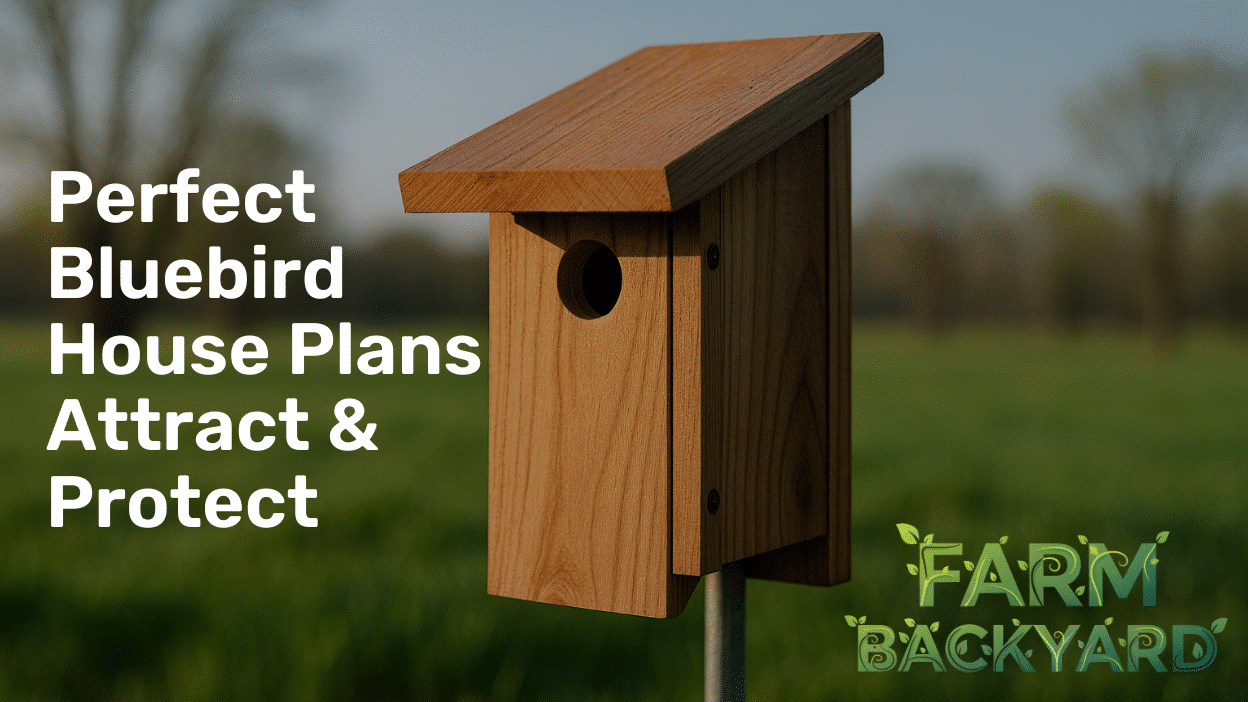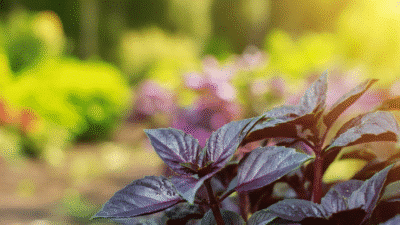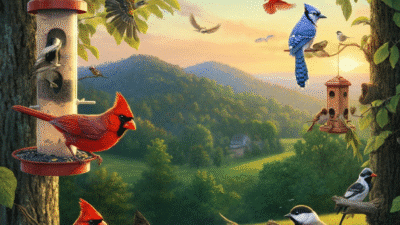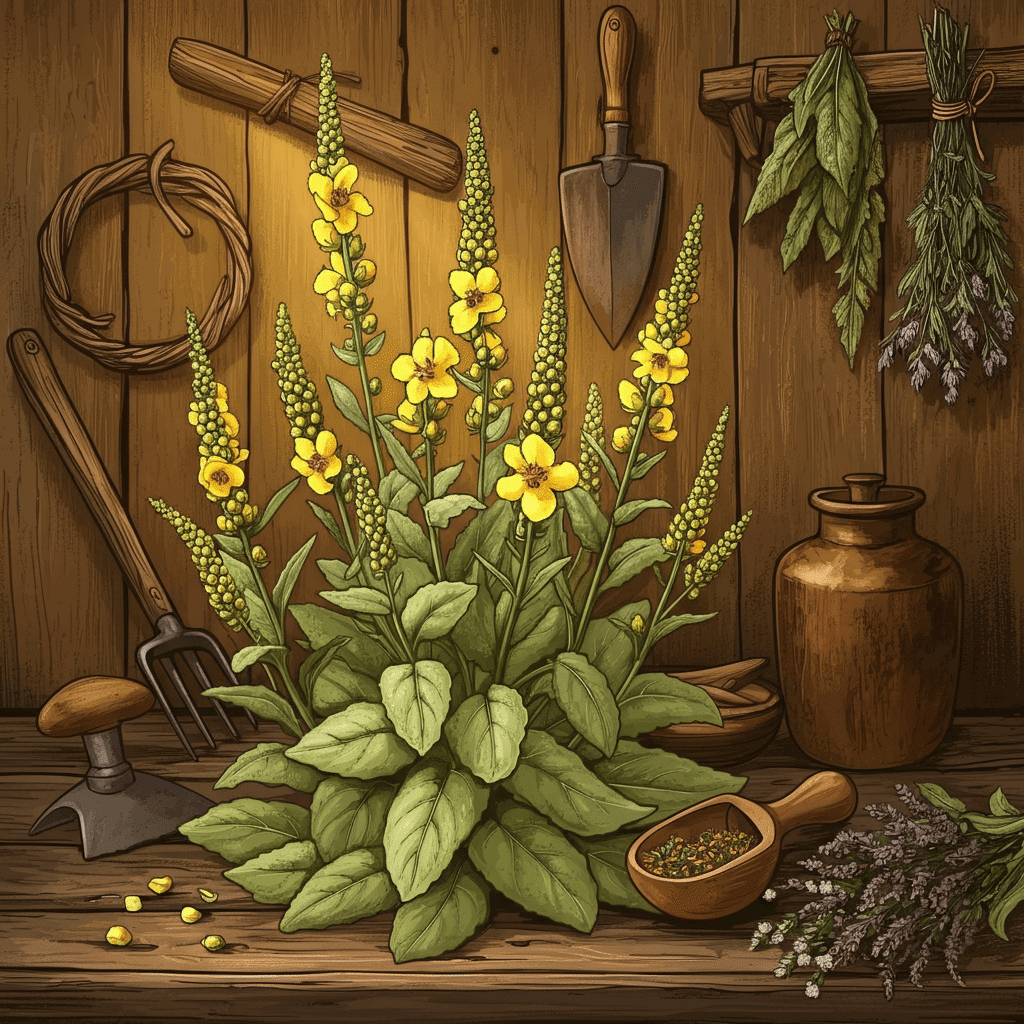Transform your backyard into a haven for these beautiful songbirds with a well-crafted nesting box that meets their specific needs.
Bluebirds bring joy to any backyard with their vibrant colors and melodious songs. These charming cavity-nesting birds face challenges finding suitable nesting sites due to habitat loss and competition from other species. By creating the perfect bluebird house, you’re not only inviting these delightful creatures into your space but also contributing to their conservation.
Building a bluebird house requires understanding their natural nesting preferences and specific requirements. The right design, proper placement, and ongoing maintenance can make the difference between an empty box and a thriving bluebird family. Whether you’re new to birdwatching or looking to expand your backyard wildlife habitat, this comprehensive guide will help you create an inviting home that bluebirds will love.
Your efforts will reward you with the opportunity to observe these fascinating birds up close as they raise their young, often producing two to three broods per season from March through August. Ready to welcome bluebirds to your yard?
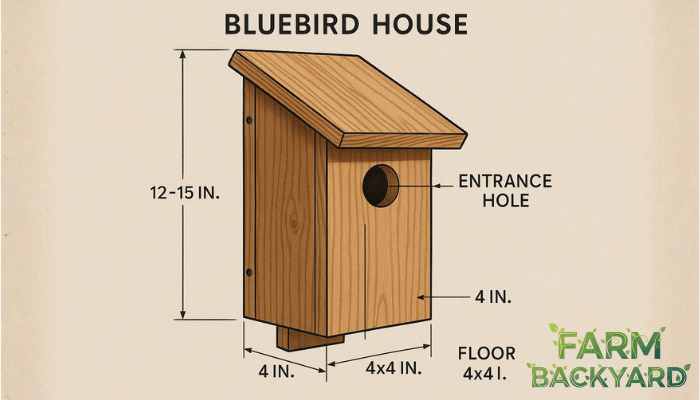
Understanding Bluebird Nesting Behavior
Bluebirds are cavity-nesting birds, meaning they require secure, enclosed spaces to lay their eggs and raise their young. Wild bluebirds typically nest in natural cavities found in dead trees, wooden fence posts, or old woodpecker holes. These natural sites provide essential protection from predators and harsh weather conditions.
A well-designed bluebird house mimics these natural cavities while offering additional safety features. The enclosed structure shields eggs and chicks from rain, wind, and temperature extremes. Strategic entrance hole sizing keeps out larger, more aggressive bird species that might compete for the nesting space or harm bluebird families.
Understanding this behavior helps explain why certain design elements are crucial for success. Bluebirds prefer houses that feel secure yet allow easy access for feeding trips. They also appreciate locations where they can quickly spot approaching predators while maintaining clear flight paths to and from the nest.
Choosing the Perfect Location
Location determines the success of your bluebird house more than any other single factor. Bluebirds thrive in open areas with sparse trees, where they can easily spot predators and hunt for insects. Large lawns, open fields, pastures, and meadows create ideal habitats that mirror their natural preferences.
Site Selection Essentials:
- Choose areas with minimal dense vegetation to reduce predator hiding spots
- Ensure adequate sunlight reaches the location throughout the day
- Maintain distance from heavy human traffic while allowing some activity
- Select spots with natural windbreaks but avoid completely sheltered areas
- Consider proximity to water sources like birdbaths or ponds
Avoid placing houses near dense brush, thick woods, or areas with heavy foot traffic. Snakes, raccoons, and other predators use dense vegetation as cover when approaching nesting sites. Excessive human activity or loud noises can stress nesting pairs and cause them to abandon their eggs or chicks.
The chosen spot should receive morning sunlight to warm the house naturally, helping regulate internal temperature. This warmth proves especially important during cooler months and early morning hours when chicks need consistent temperatures for proper development.
Peterson Bluebird House Design
The Peterson bluebird house represents a time-tested design favored by many successful bluebird landlords. Its distinctive sloped roof and elongated entrance hole create an attractive, functional home that effectively deters predators while providing excellent weather protection.
Key Design Features:
- Sloped roof directs rainwater away from the entrance
- 1.5-inch diameter entrance hole accommodates bluebirds while excluding larger species
- 12-15 inch height provides adequate interior space
- 4×4 inch floor size offers sufficient room without being too spacious
- Removable front panel enables easy cleaning and monitoring
The sloped roof design serves multiple purposes beyond aesthetics. Water naturally runs off the angled surface, keeping the interior dry during storms. The roof’s overhang creates additional protection from driving rain and provides some shade during hot summer days.
Construction Materials:
Cedar stands as the preferred material due to its natural decay resistance and excellent insulation properties. This naturally weather-resistant wood maintains structural integrity through multiple seasons while providing thermal regulation that keeps nests comfortable. Pine offers an affordable alternative that works well when treated with non-toxic sealants.
Both materials can be enhanced with natural, bird-safe wood treatments that extend lifespan without introducing harmful chemicals. Avoid pressure-treated lumber or materials containing preservatives that could harm nesting birds.
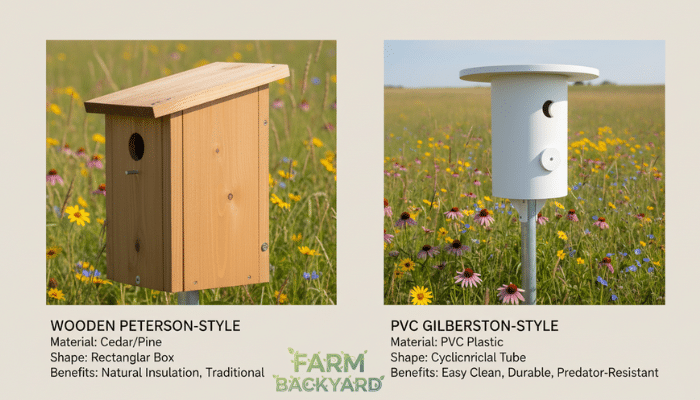
Gilbertson Bluebird House Design
The modern Gilbertson design offers an innovative approach using PVC construction for maximum durability and predator resistance. This cylindrical house features a sleek profile that many homesteaders appreciate for its low-maintenance characteristics and superior weather resistance.
Advantages of PVC Construction:
- Lightweight design simplifies installation and relocation
- Weather-resistant material withstands extreme conditions
- Smooth surface prevents climbing predators from gaining footholds
- Easy cleaning with simple soap and water
- Long-lasting construction reduces replacement needs
The cylindrical shape with an overhanging roof provides excellent protection from both weather and predators. The uniform shape eliminates corners where moisture might collect, reducing the risk of mold or decay that can affect wooden houses.
Installation Specifications:
Mount the Gilbertson house on a sturdy metal pole to maximize predator protection. The smooth pole surface, combined with the house’s design, creates a formidable barrier against climbing threats like snakes and raccoons. Ensure the pole extends 4-6 feet above ground and remains stable in strong winds.
The entrance hole size mirrors traditional wooden houses at 1.5 inches, maintaining the same species-specific access while benefiting from the enhanced predator resistance of the PVC design.
Proper Installation Techniques
Successful bluebird house installation requires attention to mounting height, orientation, and stability. These factors significantly impact both bluebird attraction and nesting success rates.
Mounting Guidelines:
- Install houses 4-6 feet above ground level
- Use sturdy metal poles rather than wooden posts
- Ensure stable mounting that won’t shift in strong winds
- Install predator baffles below the house
- Allow adequate spacing between multiple houses
Metal poles offer superior predator protection compared to wooden posts or trees. Smooth metal surfaces prevent climbing predators from reaching the nest, while proper height keeps the house accessible for monitoring without being too low for safety.
Entrance Orientation:
Face the entrance hole away from prevailing winds to protect nesting birds from harsh weather. A southeast orientation typically works well, allowing morning sunlight to warm the house while avoiding excessive afternoon heat. This positioning helps maintain comfortable internal temperatures throughout the day.
Consider your local climate when determining the best orientation. Areas with intense afternoon sun might benefit from eastern-facing entrances, while cooler climates might prefer southern exposures for maximum warmth.
Essential Predator Protection
Predator baffles represent one of the most effective tools for protecting nesting bluebirds. These devices prevent climbing predators like snakes, raccoons, and cats from reaching the nest box.
Baffle Types and Placement:
- Cone-shaped baffles work well on round poles
- Cylindrical baffles fit square posts effectively
- Install baffles at least 4 feet above ground
- Ensure baffles extend sufficiently to prevent climbing around them
- Check baffle security regularly throughout the season
Proper baffle installation creates a nearly impenetrable barrier when combined with appropriate pole selection and house design. The smooth surfaces and strategic angles make it virtually impossible for predators to gain access to the nesting area.
Additional protection measures include removing or trimming vegetation that might provide predator access routes. Keep grass and weeds trimmed around the pole base to eliminate cover for ground-based threats.
Attracting Bluebirds with Food and Water
Creating an attractive habitat extends beyond providing nesting boxes. Bluebirds need consistent food sources and clean water to establish territory and successfully raise their families.
Food Sources:
Bluebird feeders stocked with mealworms create powerful attractants that can draw birds to your property. Live or dried mealworms provide high-protein nutrition essential for growing chicks. Place feeders near but not directly adjacent to nesting boxes to avoid creating disturbances during feeding times.
Native berry-producing plants offer natural food sources that benefit bluebirds year-round. Consider planting sumac, elderberry, or dogwood to provide seasonal fruits while supporting the insects that form a large part of bluebird diets.
Water Features:
A shallow birdbath provides drinking water and bathing opportunities that bluebirds require for proper hygiene and health. Keep water fresh and clean, changing it every few days to prevent bacterial growth or mosquito breeding.
Position water sources where birds feel secure while drinking. Open areas with good visibility help bluebirds spot potential threats while accessing water.
Providing Nesting Materials
Supporting bluebirds extends to offering appropriate nesting materials that help them build comfortable, secure nests. Natural materials work best and can be easily provided in accessible locations.
Recommended Materials:
- Small twigs and dried grass stems
- Pine needles and soft plant fibers
- Pet fur (clean and chemical-free)
- Cotton batting or natural fibers
- Fine rootlets and moss
Place these materials in a small basket or mesh bag hung in a visible area where bluebirds can easily gather them. Keep materials dry and replace them periodically to ensure freshness.
Avoid synthetic materials, yarn, or anything treated with chemicals. These substances can harm birds or create unsuitable nesting conditions that affect egg development or chick health.
Monitoring and Camera Installation
Installing a bluebird house camera allows you to observe nesting behavior without disturbing the birds. This technology provides valuable insights into bluebird family life while ensuring their safety and success.
Camera Selection and Placement:
Choose weatherproof cameras with night vision capabilities to monitor activity around the clock. Mount cameras inside the roof area without obstructing the entrance or interior space. Ensure secure mounting that withstands weather and vibration.
Benefits of Monitoring:
Watching bluebird chicks grow and develop provides educational opportunities for the entire family. Regular observation helps identify potential problems early, allowing for intervention when necessary. Camera footage can also be shared with conservation organizations or used in educational settings.
Respect the birds’ privacy by limiting viewing during sensitive periods like egg-laying and early chick development. Excessive disturbance, even through remote monitoring, can stress nesting pairs.
Maintenance and Seasonal Care
Regular maintenance keeps bluebird houses attractive and functional for multiple seasons. Proper care prevents problems that could discourage nesting or harm bird families.
End-of-Season Cleaning:
Remove old nesting materials after each brood fledges to prevent parasite buildup and disease transmission. Use mild soap solutions to clean interior surfaces, rinsing thoroughly to remove any residue. Allow houses to dry completely before reassembly.
Regular Inspections:
Check houses monthly during the breeding season for signs of wear, damage, or unwanted occupants. Look for loose mounting hardware, damaged entrance holes, or roof leaks that need repair. Address problems promptly to maintain safe nesting conditions.
Seasonal Preparations:
Prepare houses for the breeding season by completing cleaning and repairs before March. Check that all hardware remains secure and that predator baffles function properly. Fresh houses attract nesting pairs more readily than neglected ones.
Understanding Bluebird Species and Seasons
North America hosts three primary bluebird species, each with slightly different habitat preferences and behaviors. Understanding these differences helps optimize your nesting boxes for local populations.
Species Overview:
- Eastern Bluebirds prefer open farmlands and fields with scattered trees
- Western Bluebirds favor open woodlands and forest edges
- Mountain Bluebirds thrive in high-elevation meadows and grasslands
Breeding Timeline:
Bluebird nesting season typically runs from March through August, with potential for multiple broods. Early preparation ensures houses are ready when birds begin establishing territories. Peak activity varies by region and species, but most areas see initial nesting attempts in April and May.
Understanding local breeding patterns helps time maintenance activities and monitoring efforts for maximum effectiveness.
Community Engagement and Conservation Impact
Building and maintaining bluebird houses contributes to conservation efforts that have helped restore populations after significant declines in the mid-20th century. Your individual efforts become part of a larger movement supporting these beloved songbirds.
Creating Bluebird Trails:
Consider organizing community bluebird trails where multiple nesting boxes are monitored and maintained by local volunteers. These initiatives foster shared responsibility for wildlife conservation while providing educational opportunities for participants of all ages.
Educational Opportunities:
Host workshops or presentations about bluebird habitat and conservation to engage community members. Share your successes and challenges to inspire others to create their own backyard habitats.
Data Collection:
Participate in citizen science projects that track bluebird populations and nesting success. Your observations contribute to scientific understanding while helping guide conservation strategies.
Creating Your Bluebird Success Story
Building the perfect bluebird house combines understanding bird behavior with practical construction and maintenance skills. Whether you choose the traditional Peterson design or the modern Gilbertson approach, success depends on proper location selection, installation, and ongoing care.
Start with a single well-placed house and expand gradually as you gain experience and confidence. Monitor your results, learn from both successes and challenges, and connect with other bluebird enthusiasts who share your passion for these remarkable birds.
Your efforts will be rewarded with the joy of watching bluebird families thrive in your backyard while knowing you’re contributing to the conservation of these beautiful songbirds. Take that first step today and begin creating your own bluebird success story.

